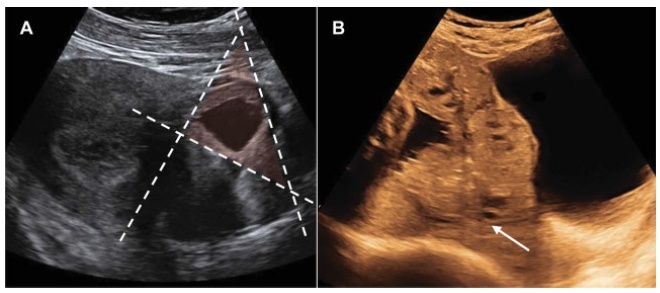Revista Brasileira de Ginecologia e Obstetrícia. 2021;43(5):347-350

Numeroushistorical risk factors have been associated with the occurrence of PAS, including maternal obesity, advanced maternal age and parity, previous uterine surgery (including illegal terminations of pregnancy), and use of assisted reproductive technologies. However, there is no doubt that the concomitance of the only risk factor related to the ongoing pregnancy–a low-lying placenta–with a previous Cesarean birth are the main risk factors for PAS, occurring concurrently in more than 90% of confirmed cases. The reasons for that are not difficult to understand. Although preliminary studies suggested that PAS resulted from an excessive trophoblastic invasion and/or substandard decidual function, the hypothesis of placental implantation on or into an iatrogenically defective decidua is currently gaining acceptance, making the case for a common pathophysiological pathway between development of an uterine niche, Cesarean scar pregnancy (CSP) and PAS. Furthermore, recent epidemiological studies have challenged the previous association of the number of previous Cesarean sections and the risk for PAS, confirming that there is a plateau of risk for PAS after the second Cesarean birth. This can be explained by the higher position of a uterine niche after previous elective Cesarean section compared to emergency Cesarean birth resulting in a three-fold increased risk of developing PAS in future pregnancies with placenta previa. Therefore, as most risk factors for PAS seem to be proxy markers for the two previously cited and in order to improve the identification of PAS cases in the antenatal period, we would like to emphasize the importance of asking two simple questions while performing every obstetrical ultrasound: “is the placenta low-lying?” and “did the patient have a previous Cesarean section?”.
[…]
Search
Search in:


Comments